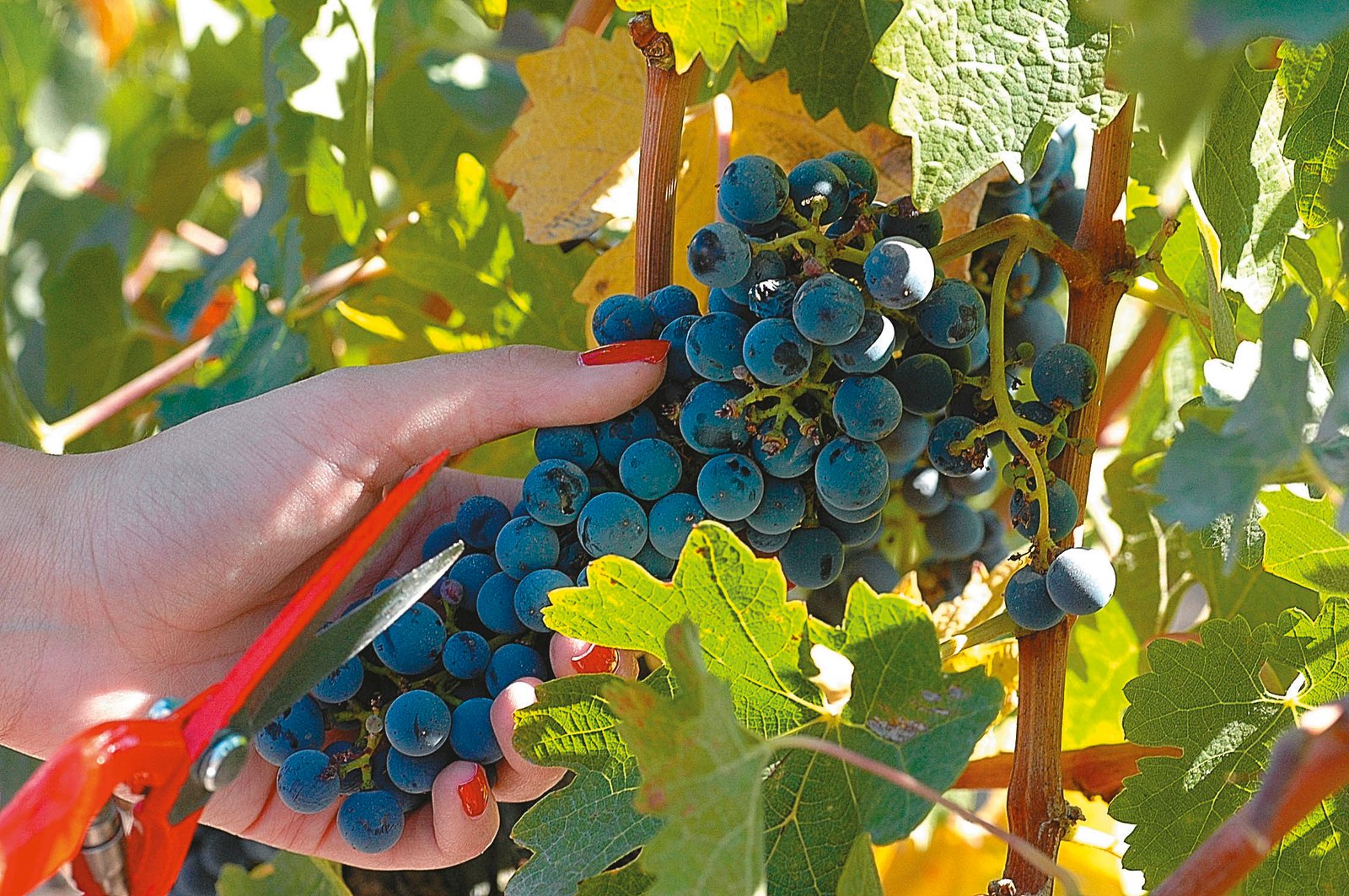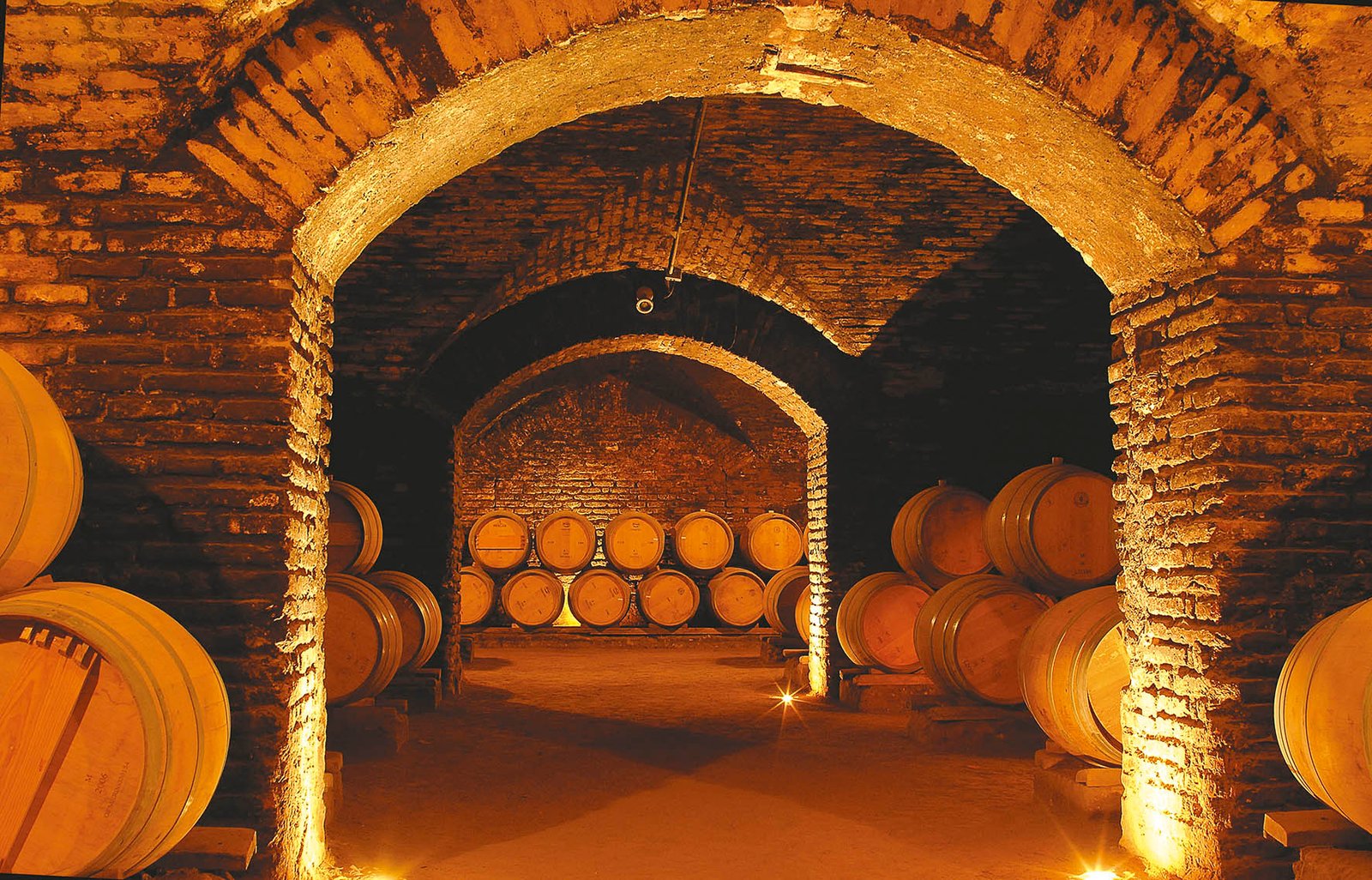
Enrique Tirado: “Don Melchor is the Pioneer Wine in Terms of Quality in Chile”
By: Fernando Donoso
Photos: Carlos Eduardo Gómez
Enrique Tirado, an agronomist as well as an oenologist (wine expert) at the Catholic University of Chile, walks with a firm step among the grape vines that the Viña Concha y Toro has owned from more than a century at Puente Alto, about 19 miles south of Santiago de Chile, at the foot of the Andes Mountain Range. These are 280 acres, at an elevation of 3,000 feet, located on the approaches of the Andean massif, in the middle of the Maipo River Valley. The company —founded in 1883 by Melchor Concha y Toro, a Chilean attorney and politician— embarked on the production of a premium quality wine fifty years ago, but it was not until 1985 when the Don Melchor project became a priority, after the arrival of French oenologists at Puente Alto. Tirado came in 1993 to evaluate the potential of the different varieties of wine lines and since 1999 he has filled the role of oenologist for Don Melchor. Under his leadership, this signature wine has been awarded the highest accolades in its history, among them the grade of 95 points from the influential North American publication “Wine Spectator” for its 2001 vintage, the highest amount of points ever awarded to a Chilean wine.
Tirado moves with the assurance he feels as the creator of the personality that characterizes the most prestigious Chilean wine in the world. His role in the process of creation of the must is total: from selecting the ripe, intact and healthy grape bunches, all the way to the final tasting. He defines the keys of this mechanism as a combination of factors, integrating “a soil, a climate, a condition —generally referred to as the terroir in the industry—, a raw material, a bunch of grapes, a fruit that will allow all its potential to be extracted, plus the experience, and the work carried out by individuals in the vineyard and in the storage areas.” On average, 180,000 bottles of Don Melchor are produced each year, of which one third is consumed in Chile, one third is exported to North America, one third to Europe and the remaining 10% is exported to meet the needs of the Asian market.

It is a sunny day in the middle of autumn, which to date has exhibited little humidity, little rain and cool temperatures. This semiarid Mediterranean weather combination —while a dry and cold wind blows down from the mountains— is the stage for a very nice walk along with this wine expert who, among the twenty-year old vines growing on a dry and stony terrain, pops individual grapes in his mouth. He is searching for the perfect degree of maturity, a very subtle combination between the amount of sugar in the fruit, its aroma, the development of the grape bunch and its color, prior to giving his final approval to start picking the grapes. He indicates that as a factor, the soil contributes 50% towards the quality of the wine produced at the end.
This very rocky soil does not seem the best quality soil…
It is a poor type of soil, as rocks make up more than half the soil, but at the same time they render it highly permeable to rain water, which does not accumulate on it. These are two very important characteristics to produce a good Cabernet Sauvignon of the highest quality. The key point is when the plant grows enough you control its stress levels and the grapes acquire a dark red color; at that point, its production is geared towards the grape bunches and not towards new shoots. A more fertile soil, with a higher level of nutrients, is good for crops such as potatoes or corn, but in order to produce a quality wine, it is imperative for the plant not to grow too much, for the shoots to develop a pace, for the stock to spend its strength on the fruit and not on the production of new leaves: in summary, to focus rather on its offsprings than on its own growth.

If we take note of the international grades awarded to Don Melchor, the quality has been going up from 1988 to the present.
That is the result of hard work, having gathered a team that for twenty years has specialized in the production of Don Melchor. It is an achievement due to the great experience and one hundred percent dedication of a great group of individuals.
How is the price of a premium wine determined? In Chile it is an expensive wine, costing more than 80 dollars.
Producing this quality wine on expensive terrain, in a vineyard requiring a lot of work, and with a very low production of a wine that takes three years to hit the market, translates into high costs. These are aspects that the consumers do not see, but that have an effect on the price, which in any event, is in the hand of the commercial area of the industry.
In professional terms, what are your challenges? Producing a great wine using other stocks or concentrating all your efforts into producing Cabernet Sauvignon?
I am concentrating in Don Melchor and hope that with the passing of time, we will be able to raise and keep up this quality product we have been able to achieve. If I think of the future, I believe that the path to follow will be to develop new products in the vineyard in the style and of the level of Don Melchor, maybe using other varieties.

The present outlook for the Chilean wine industry is not an easy one, mainly due to overproduction, the relatively weak Dollar and the stiff competition from Argentinean wines during the past few years.
I would say that this is not only a Chilean wine industry problem; there is an excess of wines in the world, which tends to saturate the industry and this in turn affects prices. In response to this outlook, Chile must focus on producing good quality wines. At the level we presently find ourselves, we need to compete with quality products; otherwise we will be left behind. The other challenge faced by Chile is that it needs to build up even more its image as a country. We have made some advances in this field, but we need to make our country an even more attractive destination, leading to the increase of tourism and thus, the exposure our wines might get as a result.
What country is the most demanding market for wine in the world?
The United States is a market where one can fine a lot of quality wines both domestically produced as well as imported ones. Another demanding market is Europe, specifically England, a country where a lot of quality wines compete for a share of its market.
How do you feel having reached such a level of recognition internationally and having been recognized as the best Chilean oenologist in 2006?
I am very happy about all that. It is a type of recognition that makes me happy, especially because it is a confirmation of my beliefs, my dreams and my projects for the future. It is good to see that the results attained show that one is on the right track. If one is successful, one also has a sense of gratification, because this is all about believing in a vineyard, in a wine, in a project. But on the other hand, the truth is that I did not think: “I am going to produce a wine to win a great prize”; that is not it at all. While we were chatting, we tasted wine from the 2001 vintage with Enrique Tirado; that season, the grapes reached a notable point in their maturity, basically because in that year the rains were concentrated during the winter season, the spring was warm and the summer was hot. The must is 91% Cabernet Sauvignon and 9% Cabernet Franc, a stock that contributes a “softness, sweetness in the mouth”, as stated by this wine expert. After fifteen months ageing in French oak barrels, a balanced and deep ruby red wine is born, in which the mature black fruit —such as blackberries, currants and other types of berries— express themselves strongly, and at the same time, delicately.

If you were to name a domestic competitor of the same quality as Don Melchor, which wine would you select?
I prefer to look at the domestic market from a more global point of view, much as I previously did when I was talking about the image the country should portray overseas. Don Melchor was the first wine to show that it is possible to produce great wines in Chile, but I believe it is good for there to be other quality wines, highlighting the image of the country and reaffirming our capability to produce great wines domestically.
What is your favorite vintage?
For me, there are several Don Melchor vintages that are very good… it is difficult to pinpoint just one… But if I had to choose a pair of wines I believe that these two, from the 2001 and 2003 vintages, are great wines. There may be others of equal quality, but since I was personally involved in the production of these two wines, I have a deep appreciation, a special kind of affection for them.



